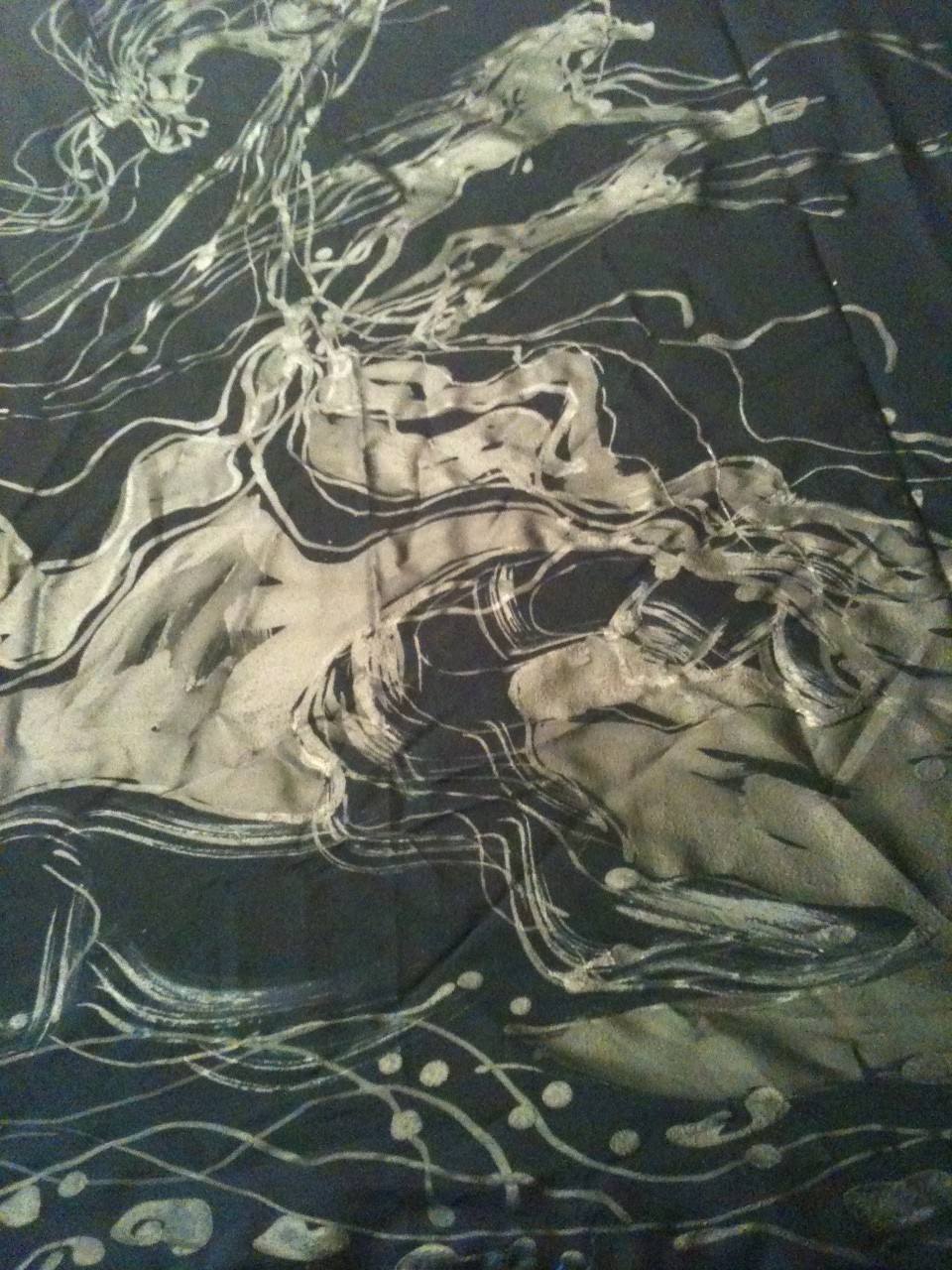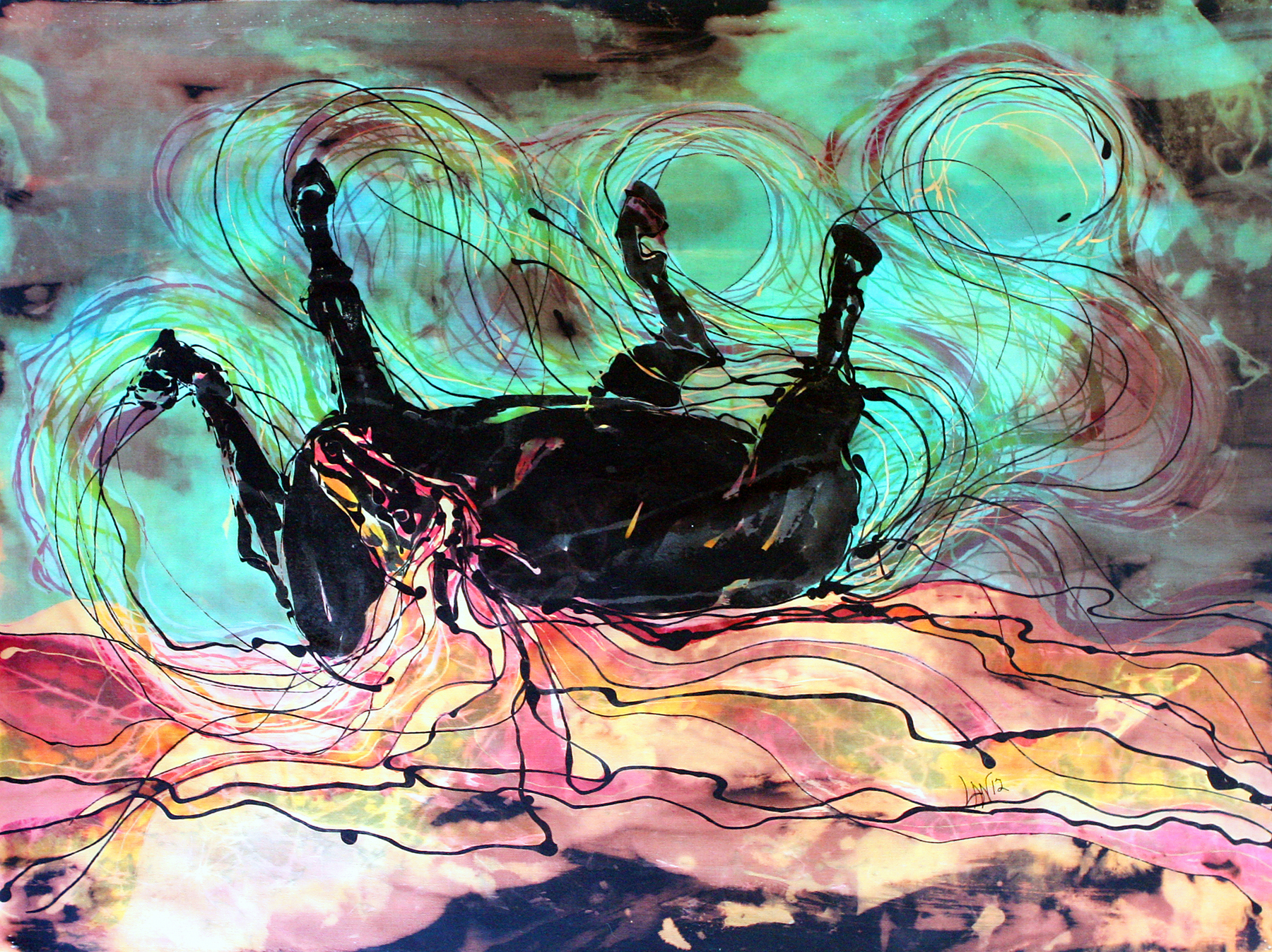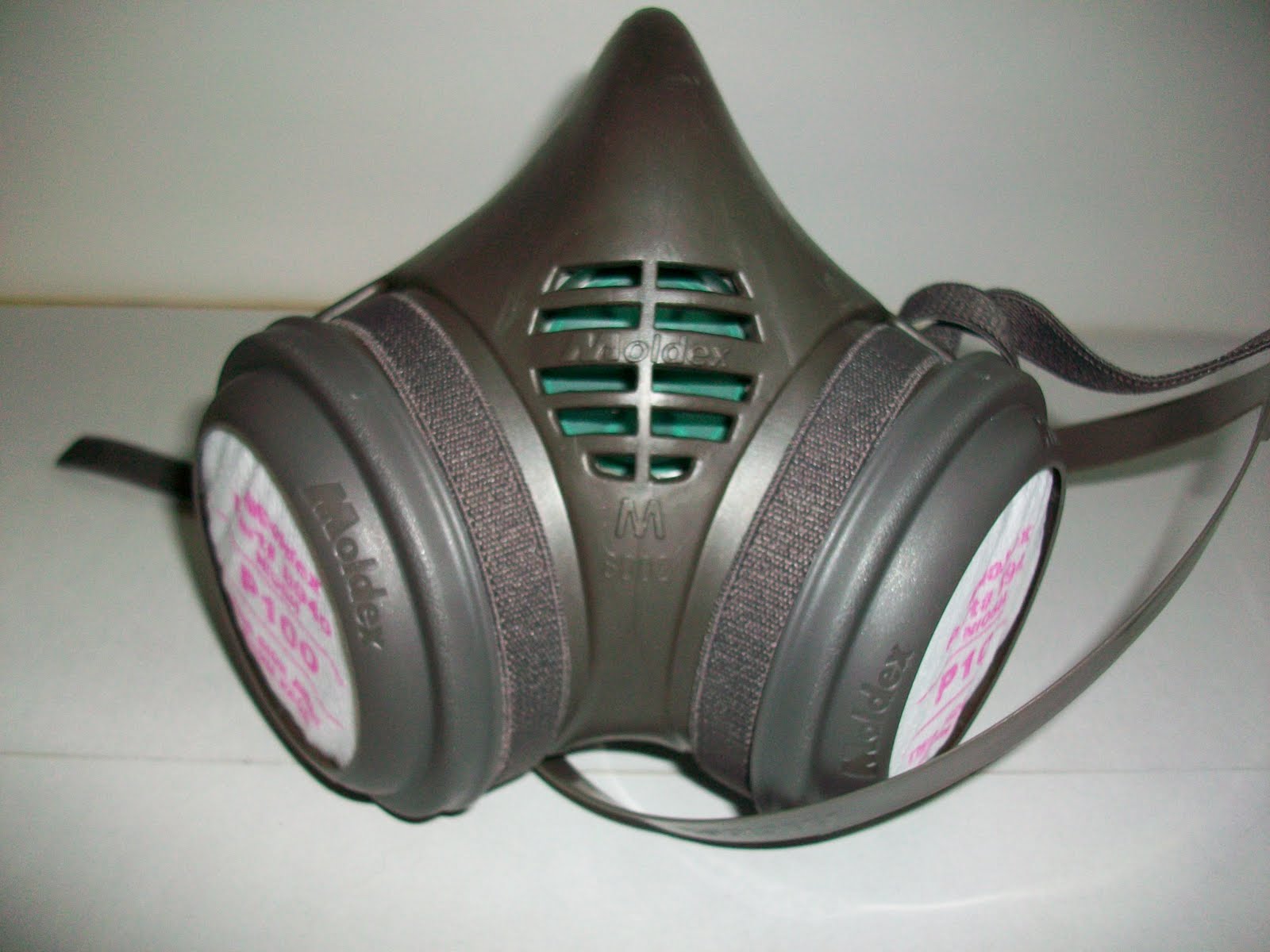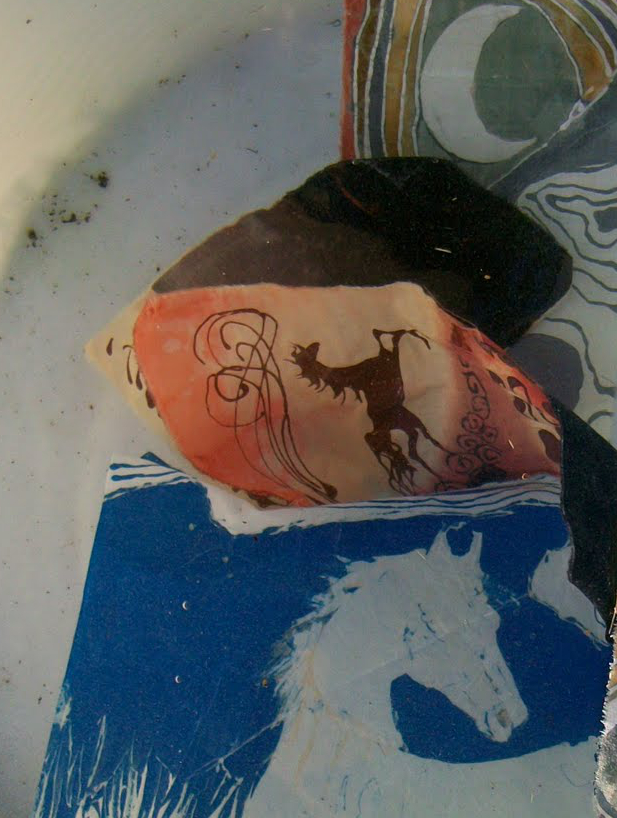Starting with black fabric is an interesting change from how I usually begin with white fabric. It can be a bit difficult seeing where the wax has been applied when you are working with black fabric, but by shining the light a certain way, you do create a reflection that you can build on.
Here is the first wax stage of my new batik, “Thunderstorm,” which will be part of a series of batik with horses from the wind. After this stage, the fabric will be bleached in stages to allow for other colors to be dyed in.
This fabric came from Dharma Trading Company, and is a black cotton/rayon mix. I like to work with Dharma Trading for purchasing my fabric, because they have fabric that is the most suitable for accepting the dye and withstanding the bleaching process (Do not bleach silk!).
A word of caution when bleaching color out: Bleach is very bad to inhale. It should be done outdoors or in a well-ventilated area with a strong exhaust fan. But worse than the bleach itself, is the process of stopping the bleach.
There are three different ways of getting the bleach neutralized:
1. With a bath of acid as in milking system acid. A light addition of this to plain water will help to neutralize the bleach.
2. Vinegar. Not as strong, but is an effective way of getting rid of the bleach if your bleach solution is not too strong.
3. “Bleach Stop”, sodium thiosulfate crystals.
The most toxic of fumes can result with the mix of acid and bleach. In strong situations, it can kill. So I recommend rinsing as much bleach out of the fabric as you can, doing a pre-rinse with the vinegar and water (mostly water), and then putting the fabric into the stronger solution of either Bleach Stop or the milk room acid, mixed with a lot of water. And when in the bath, I would agitate it and let it sit for approximately 15 minutes, after which the bleach will be neutralized, and then rinse in plain water and let dry.
After that point, it can be handled as you would any batik, by dyeing in a new color and proceeding with the normal batik process of waxing what you would want to keep and dyeing. Sometimes I will re-bleach to achieve a wide range of color variations.
Shown here are the first waxing of the new batik, “Thunderstorm,” which I will be working on for some weeks, a protective face mask, which should be worn when working indoors and again only in a well-ventilated area with a strong exhaust fan; and then the tub with several of my bleached batik sitting in the acid rinse. Included are also my finished batik, which is the new “River Sunrise”, “Horse Born from Earth, Water, Sky,” and my old favorite, “Horse Through Web of Fire.”
- River Sunrise
- First waxing on black – Caught in the Thunderstorm
- Horse Born of Earth Water Sky
- Protective mask
- Sitting in the acid rinse
- Horse through Web of Fire







Carol
I work in my apartment.
I would love to work outside.
Questions.
When you are playing fabric on the grass and dying it what prevents the dye from getting on the grass?
When you are rinsing the dye from your fabric outside where do you discard the dye water?